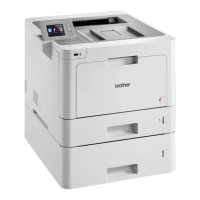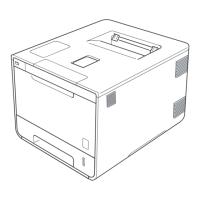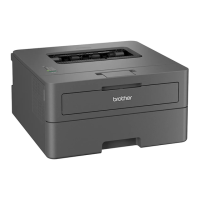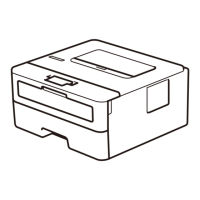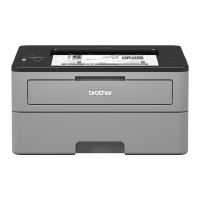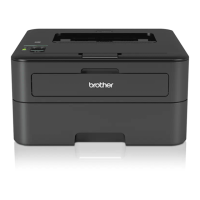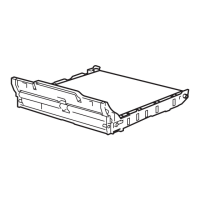CHAPTER 2 PCL - 50
5.1.15. Criteria for font selection
The printer will try to match your stated font requirements as best it can with the fonts available to it in any of
the three possible font locations. In most cases you will be specifying a font you know to be present in one of
the locations and the resulting printed text will appear exactly as you envisaged. However, if you specify a
particular combination of font characteristics that is not possible, the printer will produce the closest possible
match that it can by satisfying the following specifications in the following order: symbol set / spacing type /
pitch (for monospaced fonts) / height / stroke weight / style.
The meanings of each of these are explained in the following sub-sections. Likewise, if you simply specify a
font attribute that is not available, for example if you request a Utah Light font when only Utah Medium and
Utah Bold are available in the font locations, the printer will simply ignore the requirement (light stroke weight,
in this case) that it cannot fulfill.
5.1.16. Symbol set
The symbol set is the list of symbols that constitute a particular font. Normally, symbol sets contain lower and
upper case letters, numbers, punctuation marks and a selection of other commonly used symbols. Some symbol
sets are designed for specific needs, for example, for generating text with mathematical expressions. The symbol
set has the highest priority of all the characteristics you specify when you designate the font you require. If the
symbol set you choose is available, but not in conjunction with any of the other characteristics you specify, the
printer will satisfy your symbol set request at the expense of the rest of your designation and the text printed out
may well look completely different from what you expected to see.
5.1.17. Symbol collections
The symbol collections contain many symbols and a symbol set is made from symbol collections by selecting
the required symbols for unbound fonts. As symbol collections have more symbols than symbol sets, unbound
fonts can have more symbols than bound fonts. Due to the compatibility between symbol sets and symbol
collections, the printer searches the designated MSL or Unicode number by using a symbol set mapping table.
5.1.18. Type of character spacing
Character spacing is either fixed (monospacing), in which every printed character is allocated the same amount
of space on the line, or proportional, where characters are spaced according to their shape and size. For any
serious typographic work proportional spacing is essential since fixed spacing is unattractive and hard to read.
In general, monospacing is used with bitmap fonts and proportional spacing is used with scalable fonts.
However, proportionally spaced bitmap fonts do exist.
5.1.19. Pitch
Pitch is the number of characters that are printed per inch and therefore only applies to monospaced fonts. If you
make a pitch selection while using a proportionally spaced font the command will have no immediate effect.
However, the new pitch will be stored as part of the primary (or secondary) font designation and applied the
next time a monospaced font is selected as the primary (or secondary) font.
The printer's in-built bitmap fonts all have a pitch of either 10, 12 or 16.66 characters per inch.
5.1.20. Height
Height refers to the height in points (1/72") of unaccented capital letters in a font. This is the generally accepted
method of defining the height of a font's characters. Scaled fonts can be specified to an accuracy of 0.25 points.
5.1.21. Style
A font's style is defined by its posture (upright or italic), width (condensed, normal or expanded) and structure
(solid, outline or shadow). Upright and italic bitmap fonts and scalable typefaces are available in the printer's
ROM. However, these are all normal and solid fonts. To print using any of the other styles (for example, using
Condensed Helsinki or Outline Tennessee) you would have to download the requisite font or install a font
card/cartridge containing it.
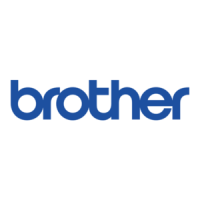
